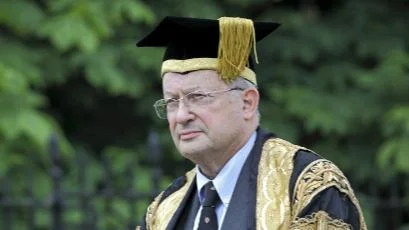Researchers from the Universities of Bristol and Cambridge have made significant progress in quantum communication by successfully demonstrating the UK's first long-distance ultra-secure data transfer over a quantum network. This achievement also includes the first long-distance quantum-secured video call in the UK.
Utilizing standard fibreoptic infrastructure, the network relies on quantum phenomena for secure data transfer. The network employs two types of quantum key distribution (QKD) schemes: encryption keys housed in light particles and distributed entanglement, which intrinsically links quantum particles. The data transfer demonstrations included a live quantum-secure video conference, encrypted medical data transfer, and secure remote access to a distributed data centre. Data was transmitted between Bristol and Cambridge over a fibre distance spanning more than 410 kilometers.
This innovative network stands out as the first to integrate different quantum-secure technologies like entanglement distribution. The team presented their outcomes at the 2025 Optical Fiber Communications Conference (OFC) in San Francisco. According to researchers, quantum communications provide security advantages beyond current classical telecommunications solutions, remaining immune to future cyber-attacks even with advanced quantum computing.
The breakthrough is part of broader international efforts in quantum communication networks. China's network connects five cities over 4,600 kilometers using fibreoptics and satellites. Meanwhile, Madrid researchers have established a network with nine connection points using various QKD methods.
Other significant breakthroughs include a 2019 metro-scale quantum network by Cambridge and Toshiba researchers operating at millions of key bits per second. In 2020, Bristol created a network to share entanglement among multiple users. Similar trials took place in Singapore, Italy, and the USA, although no large, long-distance network combined QKD and entanglement distribution before now.
This experiment sets a precedent for accommodating diverse quantum-secure techniques alongside classical communications infrastructure. It took place over the UK's Quantum Network (UKQN), established over the last decade by the same team, backed by the Engineering and Physical Sciences Research Council (EPSRC), and part of the Quantum Communications Hub project.
"This is a crucial step toward building a quantum-secured future for our communities and society," said Dr. Rui Wang from the University of Bristol. Adrian Wonfor from Cambridge's Department of Engineering added, "This marks the culmination of more than ten years of work to design and build the UK Quantum Network."
Professor Richard Penty from Cambridge highlighted, "This is a significant step in delivering quantum security for the communications we all rely upon in our daily lives at a national scale." Gerald Buller, Director of the IQN Hub at Heriot-Watt University, noted, "This is an extraordinary achievement which highlights the UK’s world-class strengths in quantum networking technology."
Currently, the UKQN links two metropolitan networks in Bristol and Cambridge via a backbone of four long-distance optical fibre links spanning 410 kilometres and three intermediate nodes. It uses single-mode fibre over the EPSRC National Dark Fibre Facility and low-loss optical switches allowing both classical and quantum signal traffic reconfiguration.
The research team plans further developments through the Integrated Quantum Networks Hub, a newly funded EPSRC project aimed at establishing quantum networks from local scales to national-scale entanglement networks, utilizing low-earth orbit satellites for intercontinental networking.

